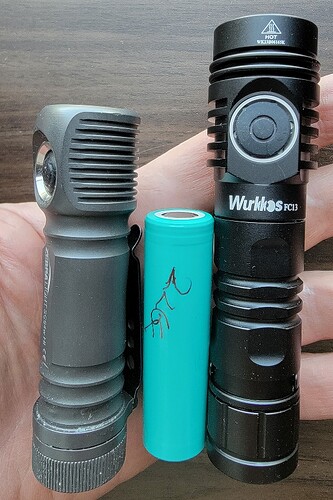This is a pretty common feature. Different lights do it in different ways, of course, but it’s one of the main things a bunch support.
The most basic, essential controls seem to be:
- From off: Immediate access to low, med, and high.
- While on: Immediate access to off, up, down, and high.
The way Anduril implements these is:
-
Off:
- 1H: low
- 1C: med (or mem)
- 2C: high
-
On:
- 1C: off
- 1H: up
- 2H: down (or 1H soon after a 1H)
- 2C: high
… and the user can configure what “low”, “med (or mem)”, and “high” mean. Lots of options for different people with different preferences. Personally, I usually set low to moon, high to the brightest level the light can thermally sustain for a few minutes, and med/mem is … more context-sensitive. I configure it to use mem (last brightness I was using) when the light has been off for 10 minutes or less, so it’ll remember during a single session. Adjust it to whatever brightness I need, and I can turn it on/off with 1 click to use that brightness. But at 10 minutes (timer is configurable and optional), it resets to a default medium level I configured. It avoids surprises, and I don’t have to remember any state from one session to the next.
The way ZebraLight does it is (by default, in G5):
-
Off:
- 1H: low
- 1C: high
- 2C: med
-
On:
- 1C: off
- 1H: low (or 1H longer for med, or even longer for high)
- 2C: toggle current slot’s primary or sub mode
With G6 + G7, the user can configure the value for low 1, low 2, med 1, med 2, high 1, and high 2. With G5, the user can configure low 2, med 2, and high 2 within a limited range. G6/G7 can, for example, be configured for “1H low, 1C med, 2C high” to give it an interface similar to other lights.
ZebraLight is a little unusual because it has no concept or shortcuts for “up” and “down”, and no shortcut to “high” while on (unless you configured G6/G7 to use 1H for high, but that’s not recommended). Instead, it has a shortcut to low (usually).
This is more difficult to find. ZebraLight has pretty unusual sculpted single-piece hosts which are smaller than most and have better thermal performance than most… plus uncommonly good ergonomics and often a nice screw-on clip.
However, for about a third of the price, one can get something similar (ish) in the form of a Wurkkos FC13 or Sofirn SC31 Pro. The host quality isn’t as high or quite as compact as ZebraLight, but it’s the same category of light and can generally do more things. So there may be non-ZL options available, depending on how strict the requirements are.

